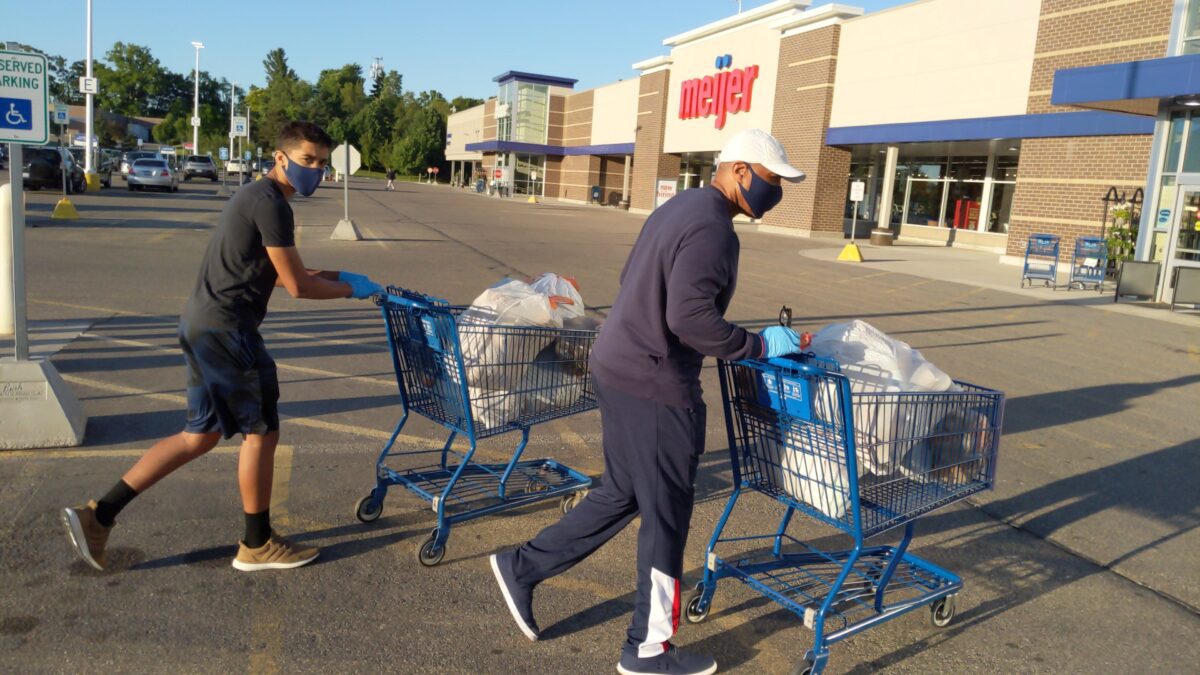
George Hall and his son, Cameron Hall, of West Bloomfield take shopping carts full of bottles and cans into the Meijer store on Haggerty Road in Commerce Township early on June 15, 2020. (USA TODAY Network)
In Shea Carney’s house, those beverage bottles and cans eligible for a 10-cent deposit return have become more of a nuisance than a useful income boost.
“I used to take them in myself but now I commonly do delivery instead of in-store shopping because of the time efficiency,” the Milford Township resident said.
Carney has put the containers in her curbside recycling in the past, and now donates them to people or fund-raising organizations who can use the cash.
“I usually let a few bags accumulate, and my husband stores them in an extra trash can − but at some point says, ‘These need to go,'” she said with a laugh. “Especially glass bottles are more cumbersome because of their fragility.
“I think most people these days have easy access to recycling and with in-store shopping find it an extra chore to haul all those bottles and cans in.”
The numbers bear out Carney’s observation. Michigan’s so-called “Bottle Bill,” enacted by voter referendum in November 1976, once boasted redemption rates above 95%, its 10 cents per-can or bottle return the best in the country. But a dime doesn’t go as far as it did in the 1970s and ’80s. Redemption returns began to lag, then plummeted beginning in 2020 when Michigan became the only US state to completely shut down bottle and can deposit returns during the COVID-19 pandemic.
The numbers haven’t bounced back post-pandemic. Bottle and can deposit redemption rates fell to just 70.4% in 2024, down 18.3% since 2019.
Researchers with the University of Michigan’s School for Environment and Sustainability, in a report released Thursday, Oct. 30, asked stakeholders all around the beverage container recycling process why they think the program is lagging and what should be done about it. While the answers varied, virtually all agree the 50-year-old, relatively unchanged program needs some modernization and improvement.
“Before the pandemic we did see bottle returns eroding a bit, so there’s certainly some assumptions that the dime just isn’t worth what a dime was in the ’70s,” said Shelie Miller, professor of sustainable systems at U-M and a co-author of the report.
“So as more people have access to curbside recycling programs, and it became less valuable to people to get their dime back, there was an erosion in some of these returns.”
The COVID-19 pandemic and the state’s shutdown on bottle and can redemptions broke people out of their previously ingrained habits of returning to the store with bottles and cans that had the deposit on them, Miller said. “Once the facilities reopened, we just didn’t see the rebound that we would have expected it to be. And so return rates have remained consistently lower.”
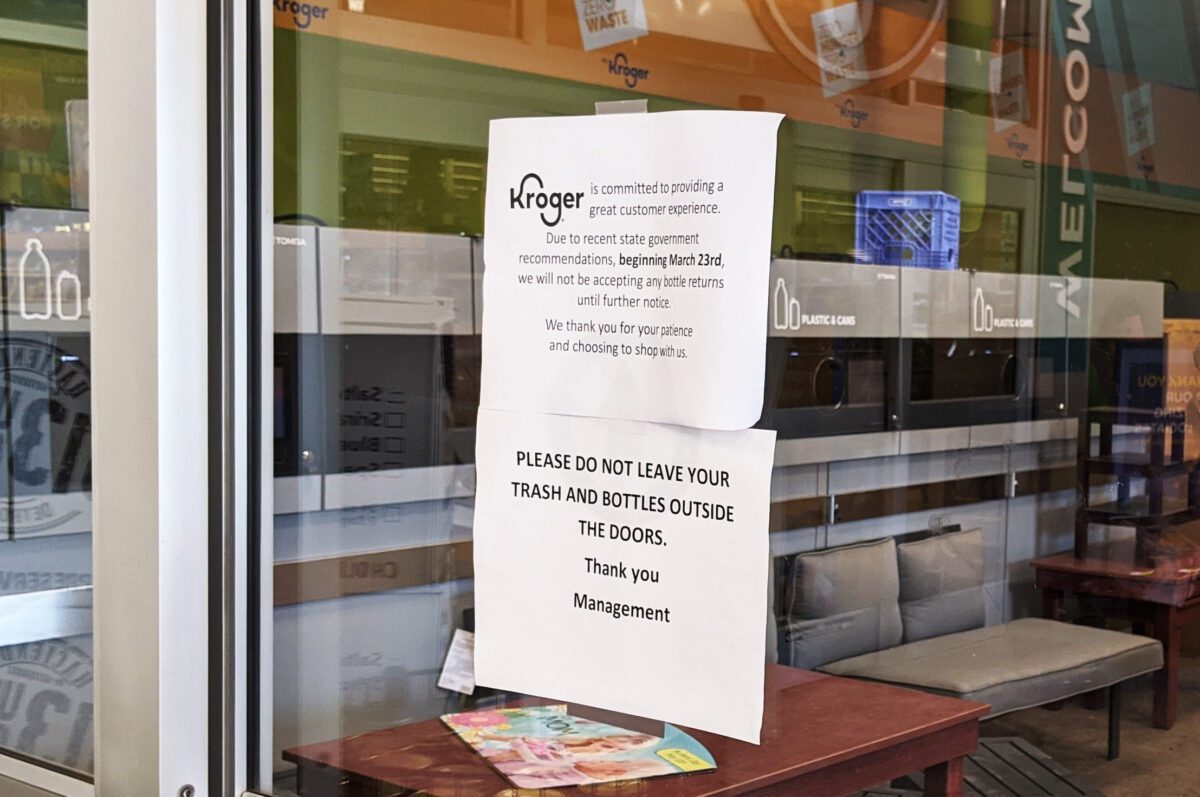
The bottle and can redemption room at the Kroger supermarket in Milford is shown closed due to state of Michigan closure orders during the COVID-19 pandemic in this May 13, 2020 photo. Bottle and can returns in Michigan plummeted amid the pandemic and haven’t recovered since. (USA TODAY Network)
Fewer redemptions means more bottle and can cash accumulating
By state law, those 10-cent bottle and can deposits that aren’t redeemed, money known as escheat, is sent to the state Department of Treasury, with 25% of the money returned to retailers collecting the containers and 75% given to the Michigan Department of Environment, Great Lakes and Energy’s Cleanup and Redevelopment Fund for environmental remediation and pollution prevention. Some $1 million is also earmarked for a Bottle Bill Enforcement Fund to enforce against scams such as bringing in bottles and cans in bulk from other states and redeeming them for Michigan’s dime − a gambit made famous in an episode of the sitcom “Seinfeld.”
“It’s only in the last three years that about 3% of those escheats have been going to recycling initiatives. But before that, none of it was really earmarked for recycling specifically, and none of it to-date has been earmarked for the bottle deposit program specifically,” said Tamanna Sengupta, a graduate student in the U-M School for Environment and Sustainability and a co-author of the report.
And with fewer deposit-payers getting their dimes back, the unclaimed redemption money is spiking. The amount of escheat was as low as $33.8 million as recently as 2017. It was $116.4 million last year.
Miller noted there is a “perverse incentive” on supermarkets and party stores taking back bottles and cans. Since their funding return from the state is based upon uncollected redemptions, if improvements cause 100% returns, the system provides them with no subsidies for their efforts.
“One of the biggest findings we found was a frustration about the lack of investment in recycling in a directed way,” Miller said. “One of the things that I think is universally agreed on is that some of this money that is from unclaimed deposits should go back to recycling efforts in some way.”
Hit-or-miss nature on what cans, bottles are redeemable a frustration
Michigan’s 10-cent deposit on bottles and cans applies only to carbonated beverages, fizzy and bubbly drinks. But the number of beverages available to consumers has skyrocketed since the Bottle Bill was enacted in 1976. It was the following year, 1977, when Perrier launched a successful US advertising campaign and spurred a widespread popularity for bottled water. Today bottled water is the second-most popular commercial beverage in the US, trailing only soda pops. But bottled water, flavored water and other similar drinks do not qualify for the 10-cent deposits under the law.
It can cause confusion for consumers, Miller said, especially when a company has both carbonated and non-carbonated versions of very similar beverages.
“So you can see someone trying to put these in a reverse vending machine, and the can looks essentially identical, and they can get deposits back from one but not another from the same company − because non-carbonated ones don’t have the deposit on them in the first place,” she said.
It can lead consumers to just give up entirely and put their bottles and cans in curbside recycling. But Miller noted curbside recyclers, while facing increased work with additional items, currently can’t access any of that redemption money.
EGLE spokesman Jeff Johnston noted curbside recycling continues to expand in Michigan communities, with more than 333,000 new curbside recycling carts rolled out in 34 communities statewide since 2019, serving more than 1.2 million Michigan residents. More than 60% of Michigan households now have access to curbside recycling.
“That’s a growing pool of households with the option of recycling deposit beverage containers from home,” he said. “And the dime deposit in 1976, when Michigan adopted the Bottle Bill, would be equivalent to only two cents today.”
Michigan’s overall recycling rate is up, from 14.25% before 2019 to more than 25% now, Johnston said, with deposit containers almost certainly making up a portion of that increase. EGLE surveys suggest that materials recovery facilities − recycling centers − process an estimated 280 million deposit containers a year.
“From EGLE’s perspective, the most important outcome is that these containers enter the recycling stream instead of ending up in landfills,” Johnston said. “Unclaimed deposits are split between a state fund that cleans up environmental contamination (75%), and retailers (25%), so unclaimed deposits still benefit the environment.”
Universal store-brand redemptions – and what to do about bottled water
A lack of universal redemption is another consumer impediment. If a shopper buys a store-brand pop from Kroger, Meijer or Walmart, those bottles or cans can only be redeemed at those respective stores − even though in many instances, the same company is picking up the bottles and cans from all three stores and taking them to the same recycling centers.
Miller noted that universal redemptions would be allowable under Michigan’s existing law; it would just require the stores to agree to it.
“Could there be voluntary agreements for (consumers) being able to take back any bottle or can regardless of retailer, regardless of store brand?” she said. “There is a lot of nuance there as far as what that can and should look like, but ultimately that was seen as something that would certainly be preferable to customers.”
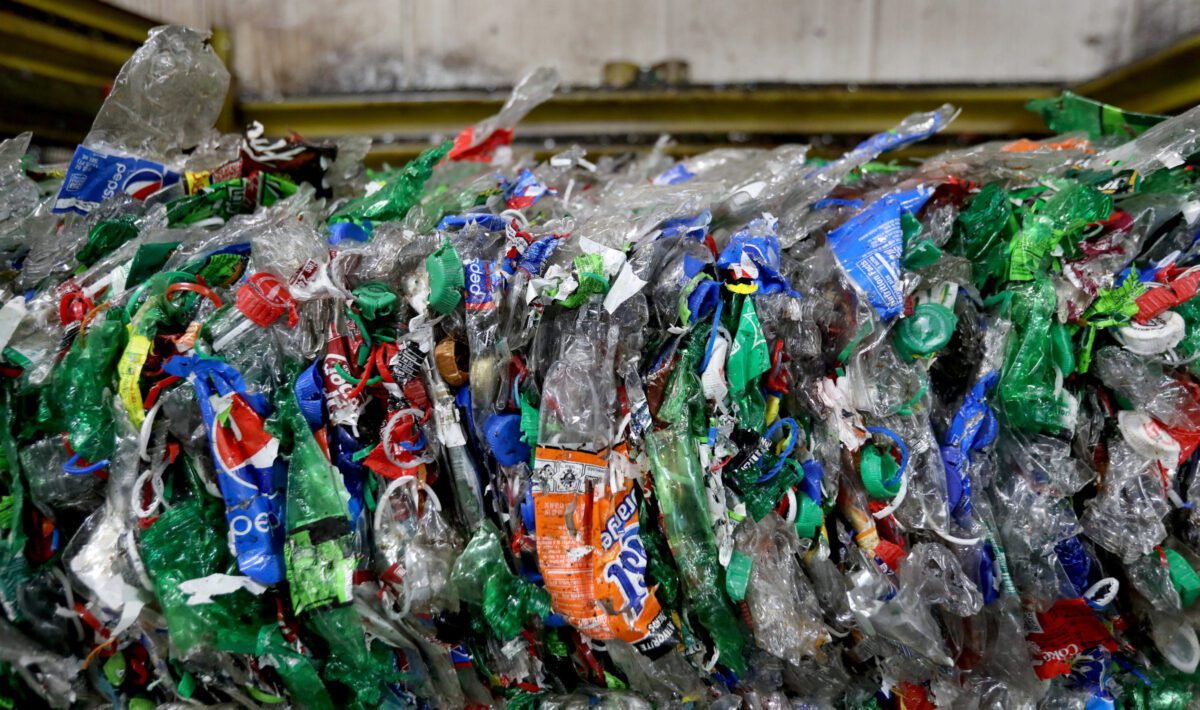
Flattened plastic bottles are stacked together at Schupan Recycling in Wixom, Michigan on Friday May 15, 2020. (USA TODAY Network)
Several US states have in recent years updated their bottle and can redemption policies, including California, Connecticut, Maine, Oregon, and Vermont. The updates primarily involve adding new types of beverage containers, increasing the deposit amount, and refining the collection systems
Expanding into the popular bottled water market for the deposit program may seem like a natural for Michigan, but there are reservations.
“There is a major sensitivity in the state as far as disproportionately affecting lower-income residents, particularly in places like Flint, where many folks are still purchasing bottled water,” Miller said. “That higher upfront cost could be seen as a barrier to some folks.”
Retailers already feel the impositions of bottle and can returns, requiring space for the returned containers and staff to move them and keep areas clean.
“I can say my members, mostly on-premises such as bars and restaurants, cannot have an expansion of items,” said Scott Ellis, executive director of the Michigan Licensed Beverage Association.
“We barely have enough room now to store these things … So any expansion to what is already a very archaic, cumbersome system will be very hard on small business owners in Michigan.”
Smith and Sengupta said that is a common refrain among retailers and will require “really thinking through how to actually help people in the system deal with those changes” such as increased beverages with deposits, Smith said.
One idea floated was to create independent redemption centers outside of the store setting where bottles and cans could be returned. Other ideas include machines that can redeem bottles and cans in bulk by the bag, rather than the tedious process of feeding them into a machine one at a time.
But should Michigan look at increasing the amount of deposits above a dime? Oregon increased its bottle and can deposit from 5 cents to 10 cents in 2017 and returns soared. The state overtook Michigan and reached 87% bottle and can deposit redemptions in 2023, making it the highest in the nation.
“It doesn’t seem like 10 cents is that bad of an incentive,” Sengupta said. “Worldwide there is general agreement that 10 cents is the best benchmark, the best amount to start with. So maybe Michigan should be looking at other opportunities we have to modernize the Bottle Bill before we start looking at the dime.”
Contact Keith Matheny: [email protected]
This article originally appeared on Detroit Free Press: Michigan’s 10-cent beverage bottle and can deposit program is on the decline. Here’s why.
Reporting by Keith Matheny, Detroit Free Press / Detroit Free Press
USA TODAY Network via Reuters Connect
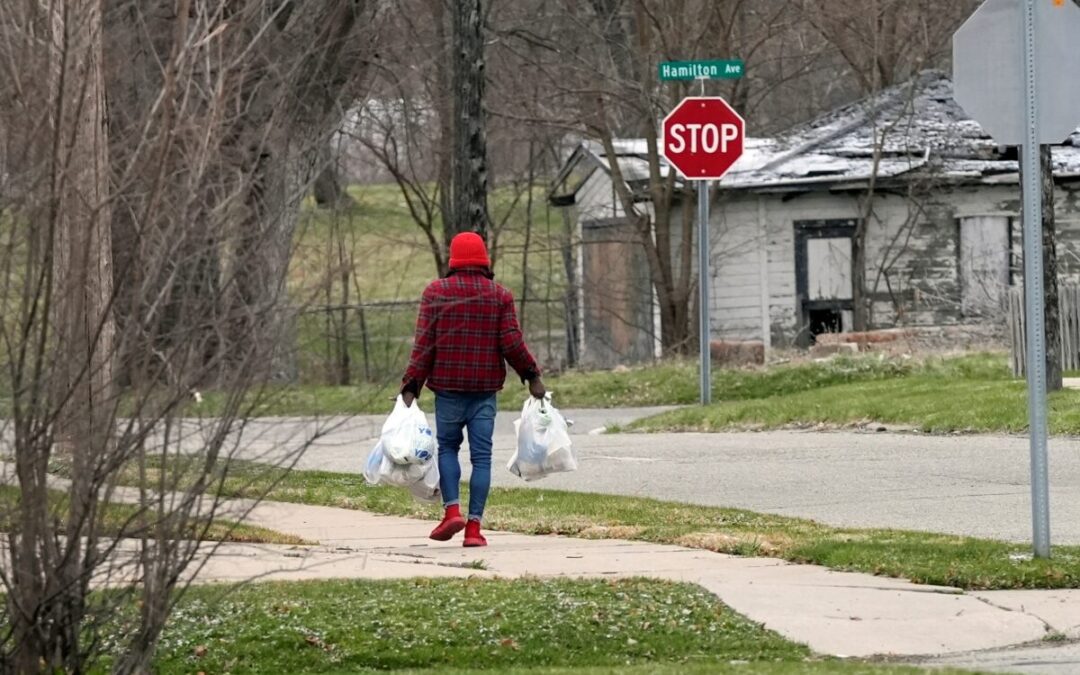
Federal judge orders Trump administration to fully fund SNAP benefits in November
A federal judge in Rhode Island ordered the Trump administration Thursday to find the money to fully fund SNAP benefits for November. The ruling by...

Why health insurance is so expensive this year — and what you can do about it.
Michelle Andrews November 4, 2025 This year’s Obamacare open enrollment period, which started Nov. 1 in most states, is full of uncertainty and...
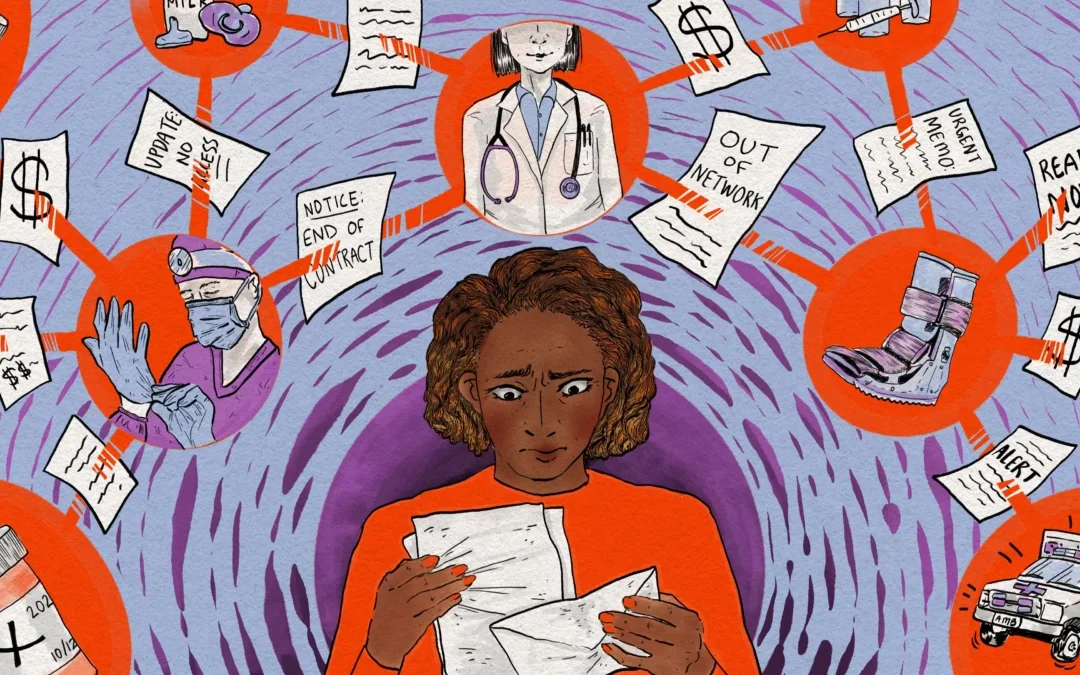
So your insurance dropped your doctor. Now what?
Bram Sable-Smith and Oona Zenda Illustrations by Oona Zenda October 29, 2025 Last winter, Amber Wingler started getting a series of increasingly...

What 1.4M Michigan residents should know about looming November pause in SNAP benefits
About 1.4 million Michiganders could see their food assistance benefits cut off in November if the federal government shutdown continues. The U.S....
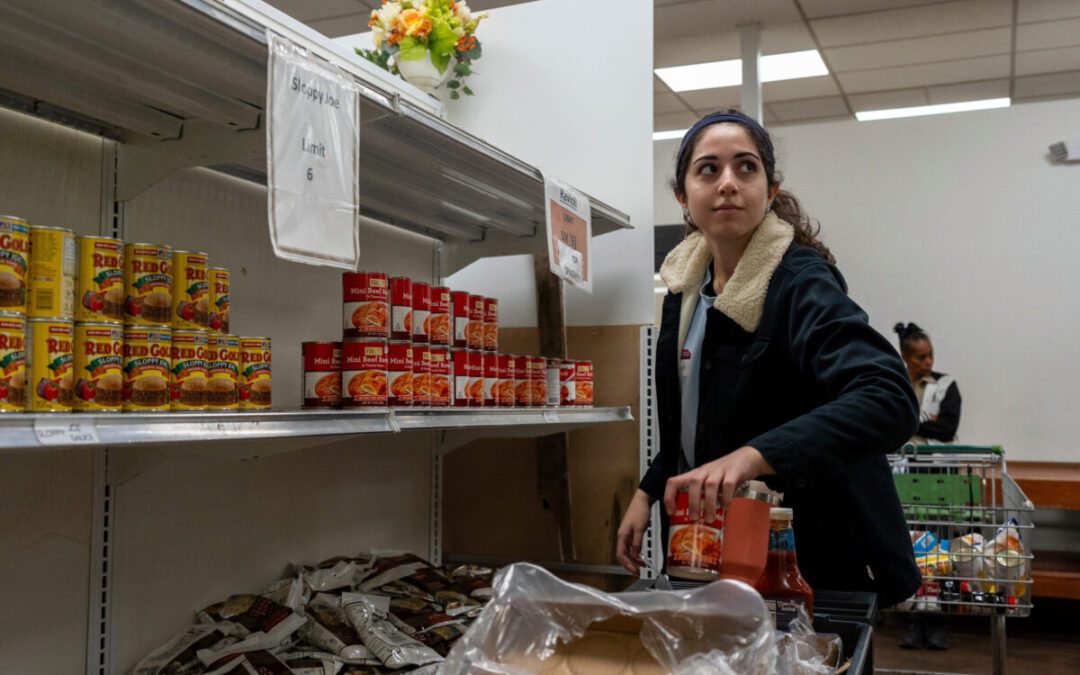
Michigan families, food banks brace for looming SNAP pause
The looming pause in food assistance benefits for 1.4 million Michiganders next month has families all across the state anxiously scrambling to plan...




